Inside the 1992 Pepsi competition which cost the drink company $32bn when 800,000 people won top prize instead of just two
In 1992, Pepsi organized a contest in the Philippines called ‘Number Fever’. Ultimately, five people died.
The idea behind it was simple: numbers would be printed on the caps of the soft drink bottles and every evening the local news would announce the winners.
But things quickly went wrong — so wrong that many Filipinos who experienced “Number Fever” are still traumatized by it to this day. The mere mention of today’s weeklong competition can provoke a negative reaction.
That’s because ads across the 7,641 islands of the Philippines promised Pepsi drinkers they could “become millionaires” by purchasing a bottle with a winning number on it — a promise they ultimately failed to keep when a glitch caused the winning number to be 349 out of thousands. bottles was printed. caps, instead of just two.
This meant that instead of two grand prize winners, there were now hundreds of thousands, all clamoring for the promised million pesos.
Scroll down for video:
A Pepsi-Cola truck driver in Manila is seen trying to put out the fire under his truck after it was bombed by protesters in September 1993. Such demonstrations were common that year, after an accident with a then new promotional campaign.
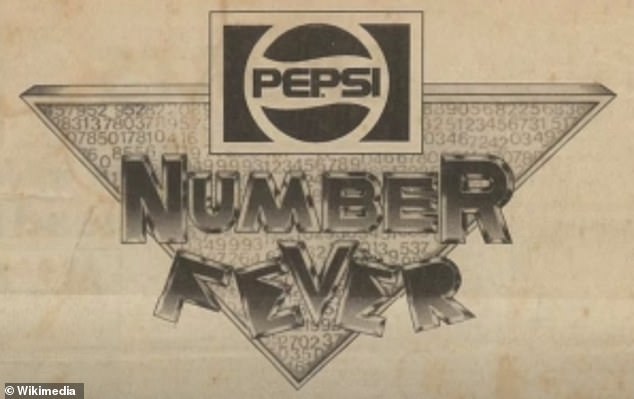
The competition, called ‘Number Fever’, involved printing numbers on the caps of the soft drink bottles and each evening the local news announced the winners. However, after a computer glitch mixed up the numbers, thousands of grand prize winners were named
The sum was the equivalent of about $68,000 today, and was 611 times the average monthly salary. When Pepsi refused to pay, riots broke out – and a teacher and a 5-year-old were killed when a grenade hurled at a Pepsi truck exploded on a busy street.
At least three others died, and Pepsi ultimately got away with a slap on the wrist. It started when Pepsi, satiated by some success, decided to extend Number Fever for another five weeks, after which things only went downhill.
The saga began almost 32 years ago, to the day Pepsi launched its ill-fated promotion abroad in February 1992.
The decision followed a successful US rollout that saw eight millionaires struck, all of whom somehow beat the 28.8 million to 1 mark to secure a winning crown cap.
These winners were featured in advertisements, lifelike.
The resulting enthusiasm – and increased sales – prompted then-CEO Christopher Sinclair to take the competition to the Pacific, where rival Coca-Cola dominated.
Pepsi Philippines (PCPPI) further announced that there would be printed numbers ranging from 001 to 999 in the caps of Pepsi, 7-Up, Mountain Dew and Mirinda bottles.
Most daily prizes were small – about 100 pesos – the equivalent of about $5 US.
But the prospect of a possible million kept people playing, and the competition, originally scheduled to end on May 8, boosted sales so much that it was extended until the following month.
However, things would go wrong long before then – all while Filipinos frantically bought bottles and searched for stray caps, often sifting through the trash.
Then, on May 25, came a big moment: a cap for the top prize was revealed, with the victorious number being 349. This was also the moment when things went terribly wrong.
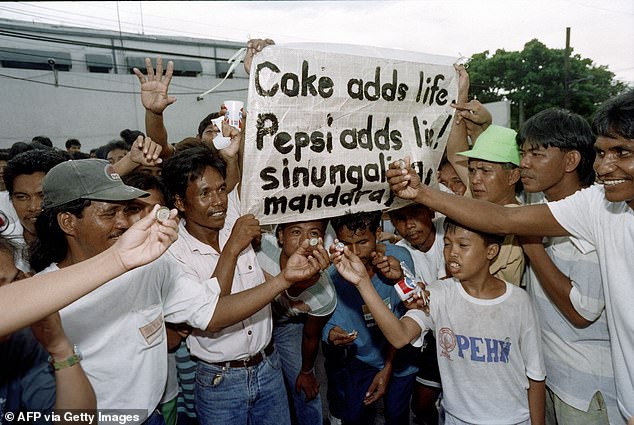
The match ultimately left five people dead as people took to the streets to demand what they considered rightfully theirs
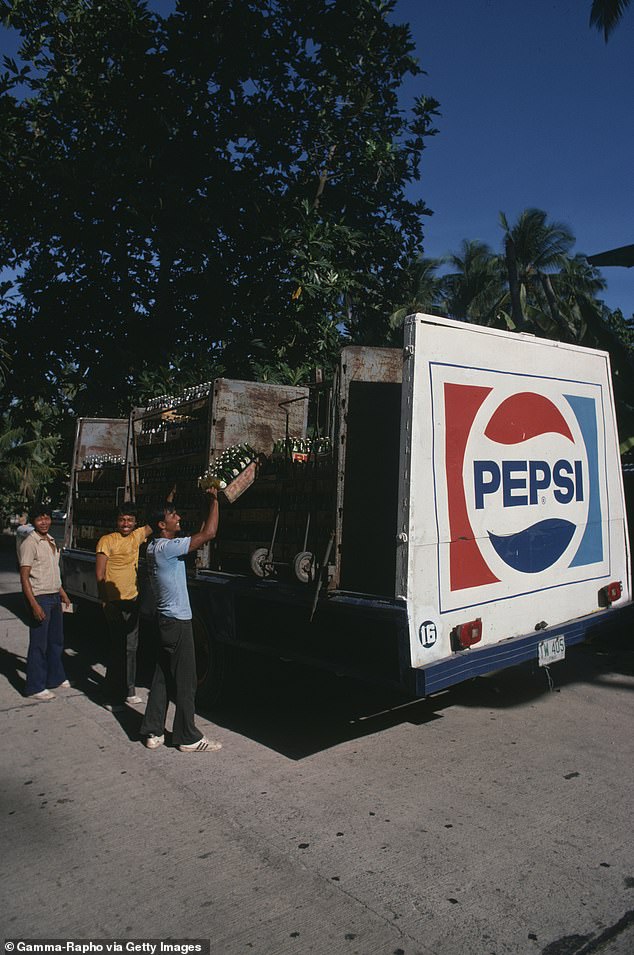
The amount today was the equivalent of about $68,000, and was 611 times the average monthly salary
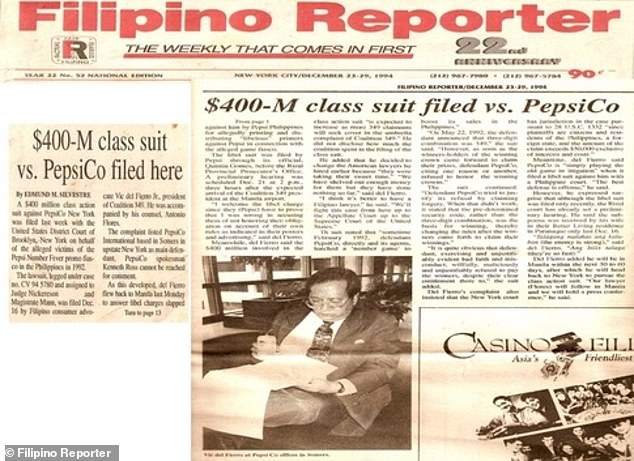
When Pepsi refused to pay, riots broke out – and a teacher and a 5-year-old were killed when a grenade hurled at a Pepsi truck exploded on a busy street. Several courts later sided with Pepsi, which ultimately did not have to pay out any of the billions that Filipinos had sought to claim
Instead of the predicted two winners, thousands of Filipinos came up to claim the prize.
So people took to the streets to celebrate, thinking that they had all become millionaires overnight and were all ready for a great payday.
However, there was some confusion – and even concern – as the number of self-declared winners was much greater than expected.
But most didn’t care; in their eyes, they had won fair and square, and the multibillion-dollar soft drink conglomerate was on the hook for every payment.
It turned out that Pepsi had made a mistake.
A computer error had printed the winning number 349 on many more caps than intended: an eye-watering 800,000.
This meant Pepsi would have to pay around $32 billion to make good on its promise – and hundreds of people rushed to the country’s main bottling plant to collect their winning caps.
It soon had to be closed and guarded by police, when it became clear that the payouts would not come easily.
Throughout the competition, Pepsi had complete control over the number of winners, relying on a computer program to seed winning caps.
Two winning caps meant there could only be two winners – and Pepsi would stay within their budget and still benefit from the promotion, executives thought.
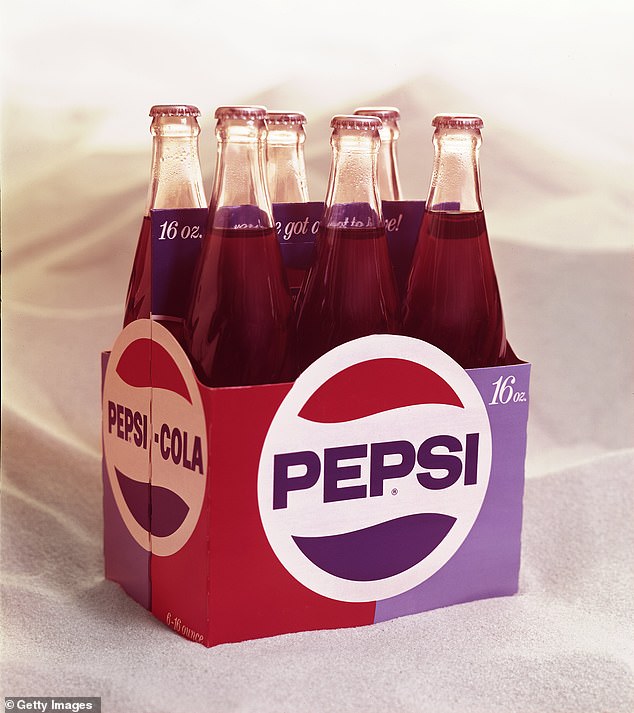
A computer error had printed the winning number 349 on many more caps than intended – an eye-watering 800,000
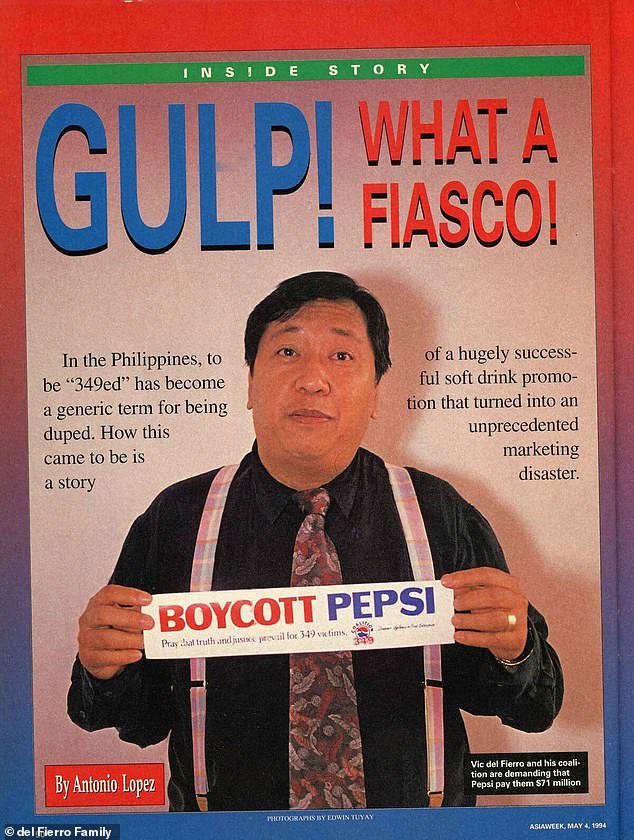
The violence would continue for the better part of a year, although the 349ers eventually took a more organized approach. they chose a local preacher, Vid del Fierro (seen here) as their leader. He collected more than 800,349 winners in an attempt to sue Pepsi for more than $400 million
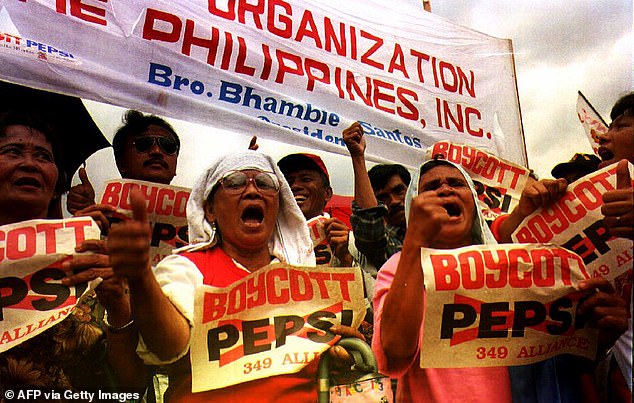
Pepsi, currently valued at $226 billion, didn’t back down, resulting in violent protests and riots that ultimately left five dead
As for 349, it was one of many that was declared a non-winning number – and therefore the bottling companies were free to print it as much as they wanted.
349 was so common that many people had more than one, and the streets in several cities were full of celebration that evening.
Executives at Pepsi quickly realized they had made a big mistake and called an emergency meeting later that evening to figure out a solution.
Since it would have cost them tens of billions of dollars to honor each winning limit, they decided to blame the computer program and offered 500 pesos for each winning limit.
The amount was an insult to many was only about five dollars.
Some agreed, but most refused and became even more indignant.
Unaffected by an unseen computer error, they believed the multi-billion dollar company should honor the full prize amount.
But Pepsi, currently valued at $226 billion, didn’t budge, resulting in violent protests and riots that ultimately left five dead.
Dozens of others were injured when 349 winners stormed Pepsi plants throwing Molotov cocktails, often into the windows of moving Pepsi trucks as they passed by.
Several courts later sided with Pepsi, which ultimately did not have to pay out any of the billions that frustrated Filipinos had sought to claim.
